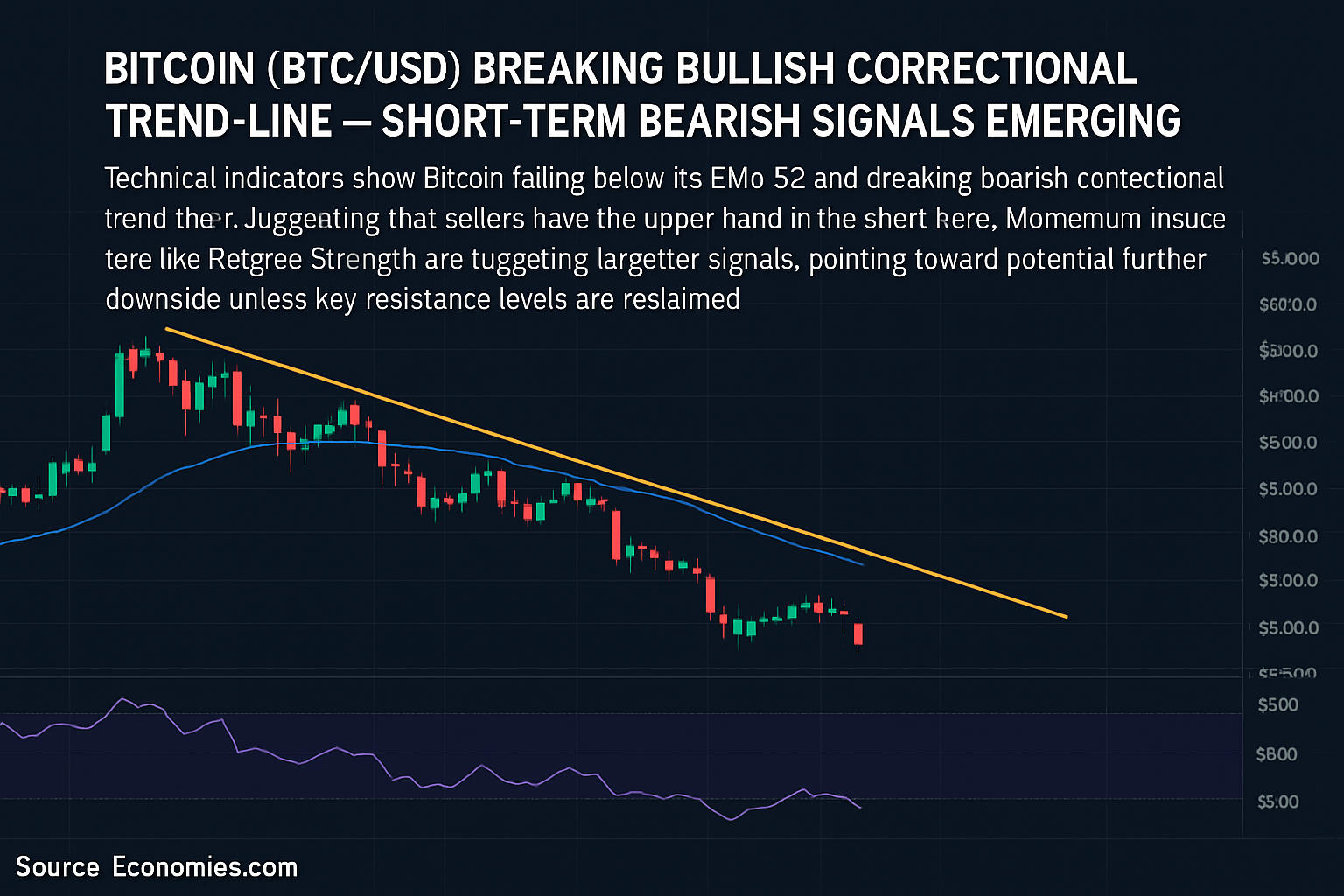After months of relentless bullish momentum that saw Bitcoin surge well above $120,000, the world’s leading cryptocurrency has suddenly found itself under pressure again. This week alone, Bitcoin has fallen roughly 7%, sliding back toward the $100,000 threshold and giving up much of its early October gains. The sell-off has rekindled debate across the crypto community: is this merely a healthy correction within a larger bull market, or the first sign of a deeper retracement?
The Market Backdrop: Risk-Off Everywhere
The recent decline in Bitcoin hasn’t happened in isolation. Global financial markets have broadly shifted into risk-off mode. Equities, commodities, and even tech-heavy indexes have seen red as investors digest concerns about sticky inflation, slowing growth, and uncertain central bank policies.
When volatility hits, traders often move out of high-risk assets — and Bitcoin, despite its growing mainstream presence, still falls into that category. Short-term traders are taking profits, leveraged positions are being unwound, and the market sentiment has tilted cautiously neutral.
Technical View: Support Still Holds
Despite the decline, several analysts argue that key technical supports remain intact. The $98,000–$100,000 range has acted as a major consolidation zone for months, and many long-term holders are still unfazed. On-chain metrics show that the majority of Bitcoin addresses holding for over 6 months remain in profit — a sign that strong hands are not selling.
Some analysts point out that as long as Bitcoin stays above its 200-day moving average, the broader uptrend remains technically sound. Others note that the Relative Strength Index (RSI) has cooled from overbought levels, potentially setting the stage for a new leg higher if macro conditions stabilize.
Institutional Interest and ETF Flows
One reason for optimism lies in institutional participation. Despite short-term volatility, Bitcoin ETFs continue to see steady inflows. Asset managers such as BlackRock and Fidelity have noted sustained interest from both retail and institutional clients. This growing participation adds a layer of maturity to the Bitcoin market — and could make drawdowns like the current one less extreme than in past cycles.
In addition, long-term holders — often referred to as “whales” — have not been distributing aggressively. On-chain data from Glassnode suggests that large wallets have actually been accumulating during the dip, a pattern that has historically preceded upward reversals.
Macro Forces at Play
Bitcoin’s price movements are increasingly influenced by macroeconomic factors. As bond yields rise and global liquidity tightens, speculative assets tend to face headwinds. However, Bitcoin’s role as a potential store of value continues to attract attention, especially amid concerns about currency debasement and geopolitical instability.
If central banks pivot back toward rate cuts or inject liquidity into the system, Bitcoin could quickly regain its upward trajectory. Conversely, if inflation proves persistent and monetary policy remains tight, Bitcoin might spend more time consolidating below the $120,000 zone.
The Bigger Picture
Corrections like this are not new to Bitcoin. Throughout its history, every major bull run has been punctuated by sharp pullbacks — sometimes as deep as 20–30% — before the next leg higher. The difference now is the scale and maturity of the ecosystem: with institutional investors, regulated exchanges, ETFs, and an increasingly global user base, Bitcoin’s price action is driven by far more complex dynamics than in its early years.
The Bottom Line
So where does Bitcoin go from here? The short answer: it depends on the macro environment, market liquidity, and investor psychology. For long-term believers, a retest of $100,000 might be less of a crisis and more of an opportunity — a reminder that even in a maturing market, volatility remains part of Bitcoin’s DNA.




